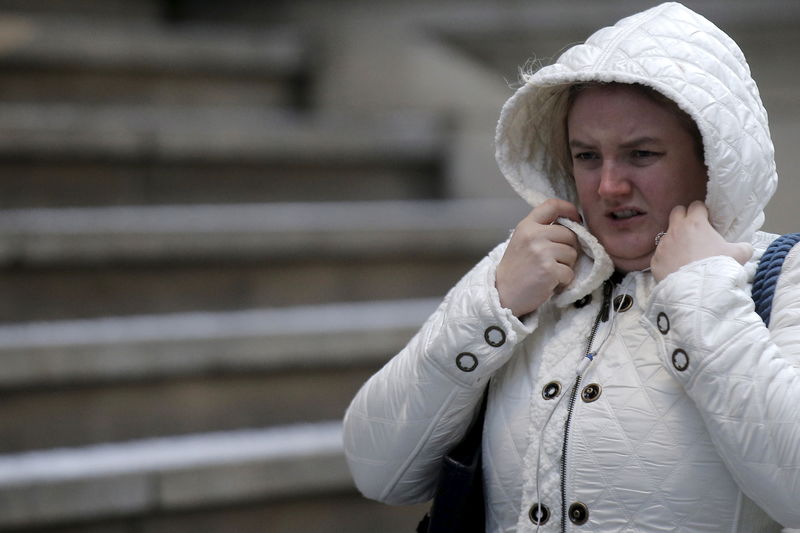 © Reuters. U.S. gas futures start the week lower
© Reuters. U.S. gas futures start the week lowerInvesting.com – Natural gas futures edged lower to start the week on Monday, pulling back from a two-month high as market players monitored winter weather forecasts to gauge demand for the fuel.
Below freezing temperatures will continue to linger across most parts of the Northeast through Jan. 20, with light snow expected throughout the region.
However, Northeast temperatures were expected to return to seasonal levels from Jan. 21-to-28, with mild conditions dominating during the period, according to updated weather forecasting models.
Front-month U.S. shed 8.0 cents, or around 2.5%, to $3.120 per million British thermal units (btu) by 8:45AM ET (1345GMT). It touched its best level since early Nov. 15 at $3.224 in the last session.
It soared nearly 15% last week, after data showed the largest withdrawal on record of U.S. supplies in storage as freezing temperatures boosted heating demand.
Natural gas prices typically rise during the winter months as colder weather sparks indoor-heating demand. The heating season from November through March is the peak demand period for U.S. gas consumption.
Meanwhile, market participants looked ahead to this week’s due on Thursday, which is expected to show a draw in a range between 190 and 205 billion cubic feet (bcf) in the week ended Jan. 12.
That compares with a whopping decline of 359 bcf in the preceding week, a fall of 243 bcf a year earlier and a five-year average drop of 203 bcf.
Total natural gas in storage currently stands at 2.767 trillion cubic feet (tcf), according to the U.S. Energy Information Administration. That figure is 415 bcf, or around 13.0%, lower than levels at this time a year ago and 382 bcf, or roughly 12.1%, below the five-year average for this time of year.
Fusion Media or anyone involved with Fusion Media will not accept any liability for loss or damage as a result of reliance on the information including data, quotes, charts and buy/sell signals contained within this website. Please be fully informed regarding the risks and costs associated with trading the financial markets, it is one of the riskiest investment forms possible.
Source: Investing.com






























